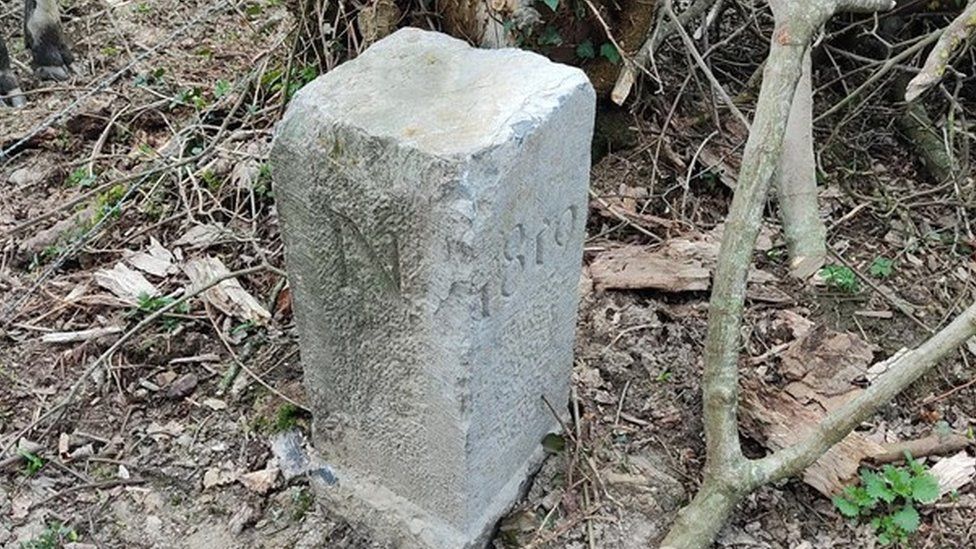The Very Brief Belgium/French Border War of About Two Weeks Ago

In 1820, France and the Netherlands entered into the Treaty of Kortrijk, which established the boundary between the two nations. Ten years later, Belgian obtained its independence from the Netherlands; Belgium, as a result, inherited that 390 miles (620 kilometers) border.
In an era before GPS and other great ways to make such borders, the nations marked the boundary with a way that would withstand the test of time — big stone markers like the one seen below. Each marker is engraved with the year it was installed (in the one below, it predates the treaty by a year) and has an N for the Netherlands-now-Belgium side and an F for the for French side.

The picture doesn’t do the stones justice, though; as the New York Times reported, they’re “believed to weigh between 300 and 600 pounds.” And they’re not just laying there on the ground — if you want to move one of these stones, you’ll need to dig them up first. It’s not something that is going to normally happen.
So imagine the surprise, when, earlier this month, the one between the French commune of Bousignies-sur-Roc and its neighboring Belgian village of Erquelinnes was out of place. As the BBC reported, “a local history enthusiast was walking in the forest when he noticed the stone marking the boundary between the two countries had moved 2.29m (7.5ft)” As a result, Belgium — unjustly — annexed about 1,000 square meters of what should have been France.
The culprit, though, wasn’t some Belgian plot to very very very slowly annex its neighbor’s land. Rather, there caper had a much more innocent explanation: a frustrated farmer. The farmer — unnamed by the press — was apparently tilling his land and was frustrated by the obstruction. So he made the very reasonable (if not arduous) move: he dug it up and moved it out of the way.
By law, the moving of the marker violated the Treaty of Kortrijk, and therefore could have led to serious repercussions had either side wanted to make a big deal of it. But, as the impetus for the border shift was probably not malicious and certainly not part of a subtle invasion, leaders in both France and Belgium were able to mostly laugh it off. Per the Times, David Lavaux, the burgomaster (basically, mayor) of Erquelinnes, wrote a letter to the farmer to explain the issue and insist that he return the stone to its original location. Hopefully, the farmer complied; as the Times continued to explain, “if the farmer does not comply, he could face criminal charges. [And] if no agreement can be reached, Mr. Lavaux said he would turn to Belgium’s foreign ministry, which would set up a Franco-Belgian commission to resolve the border dispute, a move that was last required in 1930.”
To date, though, no armies have been called up to prevent future incursion or increase the takeover.
Bonus fact: Belgium may be a bit laissez-faire about their borders (okay, that’s an overgeneralization), but they’re serious about their chocolate. How serious? In 2013, the nation issued a commemorative postage stamp to recognize its high-end treat, but didn’t just put some custom artwork out there — they went much further. As the BBC reported, “more than 500,000 stamps have been printed on special paper imbued with the aroma of cocoa and covered in a varnish to look and smell like chocolate.” And amazingly, there were no reports of people eating the stamps.
From the Archives: Scrambled City: The Belgian-Netherlands town that is a bit mixed up.
